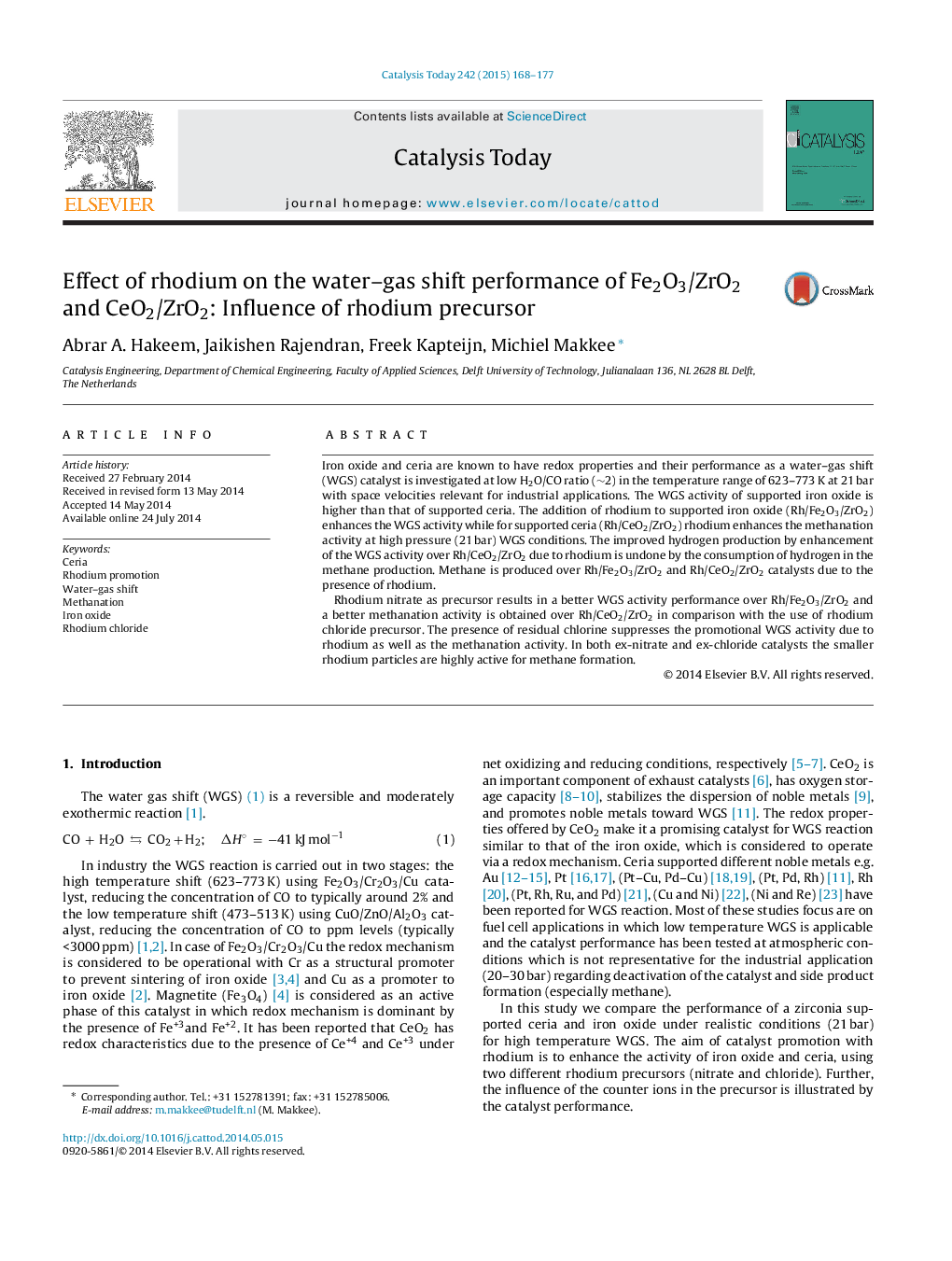| Article ID | Journal | Published Year | Pages | File Type |
|---|---|---|---|---|
| 53831 | Catalysis Today | 2015 | 10 Pages |
•Zirconia supported cerium oxide promoted by rhodium is a methanation catalyst under WGS conditions.•Zirconia supported iron oxide promoted by rhodium is a highly active WGS catalyst.•Rh(NO3)3 results in better promotion effect on iron oxide than RhCl3.•Smaller rhodium particles are highly active for methanation.
Iron oxide and ceria are known to have redox properties and their performance as a water–gas shift (WGS) catalyst is investigated at low H2O/CO ratio (∼2) in the temperature range of 623–773 K at 21 bar with space velocities relevant for industrial applications. The WGS activity of supported iron oxide is higher than that of supported ceria. The addition of rhodium to supported iron oxide (Rh/Fe2O3/ZrO2) enhances the WGS activity while for supported ceria (Rh/CeO2/ZrO2) rhodium enhances the methanation activity at high pressure (21 bar) WGS conditions. The improved hydrogen production by enhancement of the WGS activity over Rh/CeO2/ZrO2 due to rhodium is undone by the consumption of hydrogen in the methane production. Methane is produced over Rh/Fe2O3/ZrO2 and Rh/CeO2/ZrO2 catalysts due to the presence of rhodium.Rhodium nitrate as precursor results in a better WGS activity performance over Rh/Fe2O3/ZrO2 and a better methanation activity is obtained over Rh/CeO2/ZrO2 in comparison with the use of rhodium chloride precursor. The presence of residual chlorine suppresses the promotional WGS activity due to rhodium as well as the methanation activity. In both ex-nitrate and ex-chloride catalysts the smaller rhodium particles are highly active for methane formation.
Graphical abstractFigure optionsDownload full-size imageDownload high-quality image (236 K)Download as PowerPoint slide
